Palaeoanthropology Of Sub-Adulthood : Tracing Links from Grandparents To Grandchildren
- Subhash Walimbe
- Mar 13, 2024
- 12 min read
Subhash Walimbe
Rtd. Faculty, Deccan College PGRI, Pune 411 006
Preamble
Sometime back I was invited by an old age home in their monthly lecture program to talk about human evolution from the perspective of Hindu philosophy. I had planned to talk about the legend of Lord Vishnu’s incarnations. However, before the lecture commenced, in an informal gathering, I was stunned and disturbed by persistent queries by the senior citizens about their self-worth. One of them went on to say that if we were worthy and relevant, history would not have neglected us. These conversations were happening in a five-star old age facility. Inmates of the home possibly came from affluent families, and many must have had successful careers, they were together in this home, yet very lonely, distanced from their families, wallowed in a sense of self-pity and irrelevance. Intuitively, with their permission, I set aside my slides and formal talk I had come to deliver and decided to talk about the important role seniors played in our evolutionary history.
Sub-Adults in Evolutionary and Cultural History
I recollected an article which I read some 20 years back, titled: “Where Have All the Children Gone: The Archaeology of Childhood?” Written by Kathryn A. Kamp (1). This fascinating write up, concluded with another intriguing question asking, “Where have all the old people gone?” This poses the question of generational interlinkages from grandparents to grandchildren. There is a definite continuity, a story of conjunction, that owe their ‘grandness’ to each other!
I attempt to connect these dots and the relationship that existed since the advent of civilizations. The concern is, do we really appreciate the role of sub-adults and ‘seniors’ in the shaping of our bio-cultural progress? Perception is that these age groups have little or no relevance in human evolutionary history. A simplistic argument is that the children are too young and seniors are too old to contribute to active human chains. It is ironic that while children proportionately remained marginal in research, adults/ seniors remained relevant largely from a palaeopathological perspective in the domain of archaeology.
Children are critical to the survival of any society; but appear peripheral to the issues of subsistence strategies, social organisation, population growth, and culture change. Assumption is that the presence of children, attitudes toward the young, or the nature of the childhood experience is not making any substantive contribution to these processes.
Indulgence as it may appear to a scientific gaze, artistic representation of any of our prehistoric ancestors, australopithecines, H. erectus, Neanderthals or AMHS, or even a picture of modern village life, you will see men and women moving around conducting their daily affairs, and children are seen, playing, eating, laughing, or crying.
Today, I want to do some introspection and ask my contemporaries if we were ever serious about putting children as a priority in our research, particularly in archaeological anthropology. Anthropologists in my opinion have not engaged with children and childhood as they did with issues of subsistence and ethnographies. There are some exceptions like Deepak Behera whose prime research interest throughout his career concerned these aspects. Also, there are scholars like Geetika Ranjan, Sunita Reddy, and maybe a few others, who contributed significantly to this area. It is only recently that a young researcher Tanni Chakraborty did her doctoral research on ‘archaeology of childhood’.
It is in this context that I decided to share my contemplations on the beginning and concluding phases of our lives, and bonds of intimacy and continuity between them from an archaeological perspective.
In fact, when we talked about human evolution, Taung baby was the first to challenge the hypocritic Piltdown Man who was occupying the chair of our direct ancestor. The fossil, a significant discovery made in 1925 in South Africa, belonged to a child who was at the stage of development of a present-day six-year-old. It was the first Australopithecus specimen and a true ‘missing link’. But because the skulls of young humans and young apes are so similar, and it was so different from the phoney Piltdown Man, that it was ignored for more than three decades thereafter.
Let us talk about the scenario in the Indian Protohistoric Era
The Indian subcontinent provides an excellent spectrum of human skeletal evidence representing a wide temporal span of the last 10,000 years. These populations include a rich spectrum of cultural adaptations, including hunting and gathering in the Mesolithic, urbanisation in the Harappan, agro-pastoralism in the Neolithic-Chalcolithic, and Iron-Age economy in the Megalithic.
The protohistoric skeletal series, especially in the Neolithic-Chalcolithic of India, is characterised by the over-representation of sub-adults, accounting for almost 70% of the collection. The presence of sub-adults in large numbers may to some extent be attributed to the differential preservation in burial urns, which provided a protective cover to delicate bones against the pressure of surrounding soil sediments.
Yet, prior to 1980, remains of sub-adults were usually discarded because these elements do not possess racially diagnostic features and were not deemed relevant from an ethno-historic viewpoint. It was later that researchers concurred that the findings of sub-adults, belonging to a well-knit temporal, cultural and regional zone, is a definite advantage to biocultural studies in India. Today, questions concerning immature remains and childhood in the past form an important part of palaeo-anthropological research. Children, being sensitive to adverse genetic, nutritional, epidemiological, environmental factors and metabolic upsets, induced several social buffers which characteristically influenced their communal life, especially during the early farming stage.
The subadult skeletons carry a wealth of information about their physical and social life; from their birth, growth and development, diet, and age at death, to the social and economic factors that exposed them to trauma and disease at different stages of their short lives. In recent years, children have emerged as important social actors in the reconstruction of the past. We are increasingly becoming aware of their importance in reconstructing biological and social histories of lived experiences of humankind. A child’s genetic inheritance may determine their level of frailty and susceptibility to disease and death, but their health is profoundly influenced by overlapping and interconnected socioeconomic layers, comprising their family, immediate social environment, and cultural norms that dictate their lives. The World Health Organisation in one of their publications gives excellent narration of the entire story (2). The following diagrammatic representation summarises it:

Overlapping and interconnected socioeconomic factors that influence children’s health and their lived experience, cited from The Health of Young People. A Challenge and a Promise. (WHO publication, 1993)
Childhood are the formative years, the time when skills are nurtured, and belief systems inculcated. This is the phase in which attitudes are imbibed, values learned, and human personalities acquire its basic contours. Undeniably, children were and are an integral part of the ecosystems of the societies, irrespective of the conditionalities of the technological era. The sub-adults/teenagers in proto-historic societies must have been integral to subsistence strategies by contributing labour and innovations. Specific activities such as herding, getting water, and collecting firewood were possibly the primary responsibility delegated to children or to young boys and girls. Their engagements decidedly went beyond the household, possibly as farmers, pastoralists, participants in blue economies, and entrepreneurs.
Our Research
As said earlier, occurrence of subadult remains in large numbers in early agro-pastoral Deccan Neolithic-Chalcolithic sites was a positive boon for researchers. It helped us set our own research agenda. It helped us immensely to build the demographic profile of the bygone populations and construct a variety of types of mortuary curves, life tables, and survivorship curves. Inferences drawn from our research helped us evolve several theoretical models and were useful in plotting extents of settlements and making prognosis for the food economy. Projections of infant mortality provide important inputs in estimating population growth rates. We were also able to extrapolate nutrition patterns and health issues.
The palaeopathological lesions on teeth and bones (like, enamel hypoplasia, periostitis, Harris lines, metabolic insults, etc.) gave insights of the early childhood morbidity. It confirmed that children are particularly vulnerable at birth, then again at the time of weaning. Data suggested some of them experienced stress in the third trimester in the womb. In many skeletal series a large percentage of children appeared to have suffered from the stress of either nutritional deficiencies or illnesses, which are at times hard to separate. Local diets, medical care, and hygienic practices all affect children’s health, and in such cases, ‘ethno’ examples proved useful.
Each culture has specific notions of how children should be raised. Breast feeding is one child rearing practice that can be reconnoitre by examining patterns in dental hypoplasias, and by trace-element (Sr-Ca) chemical analysis of bones. Age at weaning depends on both cultural norms and beliefs and several other contextual factors, including work requirements, subsequent pregnancies, medical problems leading to the cessation of lactation, and the economics of providing alternative foods. Breast feeding practices have ramifications for infant and child health, maternal health and social bonding. (All the data quoted above is based on our own research. Relevant citations can be shared with anyone, if interested.)
The most important aspect of child raising is “primary socialisation”. It is the time during which humans first begin to learn language and other cultural behaviours, acquire a wide spectrum of knowledge about the natural and social environment, and develop physical abilities and skills. The type of instructions a child gets in primary socialisation are not necessarily instructional but often experiential. Informal learning through storytelling or playing are effective means to communicate values and skills and are in frequent use among people depending on oral traditions.
In prehistoric evolutionary stages survival and competition might have been an important factor, but in the later protohistoric settled communities probably families would have desired cooperative children and not the competitive ones. And there comes the role of parents to mentor the young ones, and probably more so of grandparents. Community living was a norm in protohistoric times. They lived in clan clusters and most children had the patronage of the clan consisting of senior members that included grandparents, granduncles, and grandaunts. Able bodied adults went out in search of food and children stayed with the seniors and learnt life skills from them. Emotional connection between seniors and subadults was immense. Surplus economies became more competitive and as one moved into industrial setups, from clans to joint families, the era of nuclear families became prevalent. The bonds between senior members of the families and subadults weakened resulting in the kind of loneliness that I witnessed in the senior citizens home that I visited recently. But let me revert to tracing genetic linkage for a scientific learning to trace the bonds.
Tracing Genetic Bonds
There are two components to natural selection – differential fertility and differential mortality. Differential fertility refers to the fact that those who are more fertile, and who produce more offspring, contribute more of their genes to the next generation. A gene that promotes fertility is passed on more frequently than a gene that inhibits fertility. Differential mortality refers to the fact that those who live longer are more likely to produce more offspring and therefore contribute more of their genes to the next generation. Any gene that promotes longer life and health will be passed on more frequently than a gene that causes death or illness.
Charles Darwin coined a term which he called ‘fitness’ to describe the amount of contribution any given individual makes to the next generation. Hence, fitness doesn't refer to strength, or physical endurance, or anything like that. Fitness is a relative measure of how many offspring an individual has. The term ‘survival of the fittest’ therefore simply means that those who reproduce more are more likely to have their genetic material survive to be present in the next generation. This is indeed one of the parameters to measure evolutionary success of a species.
How Does This Phenomenon Work in Humans?
The existence of menopause, a life stage that humans do not share with our primate relatives, has always been a topic of debate amongst evolutionary biologists. Why would it be beneficial for females to stop being able to have children with decades still left to live? There are very few species where there is room for life after adulthood’s reproductive function. Yes, incredibly small exceptions exist, like humans, where animals live past the ability to reproduce. Human males maintain some generative capacity until the end of their lives. But for females’ case is different, they may not be reproductive and still not dead. This segment of ‘grandmothers’ do contribute to their babies - by helping with their babies’ babies, so their daughters might have the reserves to reproduce again successfully. This is the “grandmother hypothesis,” proposed by anthropologist Kristen Hawkes (an anthropologist at the University of Utah) and colleagues in a 1989 publication. (3, 4). (The Grandmother Hypothesis actually originated with a 1957 paper by the late ecologist George C. Williams. (5)
Our own demographic observations on the early agro-pastoral societies indicate an average lifespan of around 30-35 years. Not that everybody was dying before 35 years, but anything above that was a bonus! Another two important observations were about the life expectancy at birth which was around 16-18%, meaning thereby that only 16 to 18% of children were surviving till adulthood and able to contribute to species continuity. The infant mortality was between 60 to 65%, which essentially meant, more than half of the children produced were dying before completing the first year of their life. In such scenarios, it was extremely essential for a woman to have the first baby around 15±1 years of age and around 8 to 10 conceptions during her sexually active phase, maybe with child spacing of only of 15-18 months.
There is no direct fossil evidence, but in earlier human forms probably women needed a gap of at least three to four years between children, as multiple, highly dependent babies are incompatible with their nomadic lifestyle. No such limitation existed when people started living in permanent settlements, and so it became possible for women to have children much more frequently, with a gap of 15-18 months. It may be noted that, till very recently, the most common customary blessing to a newly wedded Maharashtrian bride was अष्टपुत्रा सौभाग्यवती भव -meaning thereby, may you be blessed with eight children (sons?). Due to the high rate of infant mortality, it was natural that the birth rate was high. Out of eight to twelve pregnancies (including mis-carriages/abortions) that average women might have experienced during this era, probability of only two to three surviving and reaching adulthood was a reality that people lived with. It must be asserted here that there were no external interventions in the form of contraceptives to interfere with the natural rate of birth. There are studies that suggest that most small-scale communities have knowledge of herbs and methods that were used for spacing childbirth. Proto-historic evidence in this context is negligible. However, fertility rates significantly grew in surplus and settled economies.
Connecting Dots
Frequent child births were thus the basic evolutionary need for a species survival in the protohistoric period. In these societies grandmothers were not occasional nannies but were primary care providers as mothers had to go out to provide economic support for survival in subsistence economies. Our extraordinarily long childhoods start to make sense when you consider the huge investment put by the elders, particularly grandparents. Hawkes (2003) says that grand mothering helped us to develop “a whole array of social capacities that are then the foundation for the evolution of other distinctly human traits, including pair bonding, bigger brains, learning new skills and our tendency for cooperation.” (pp. 391)
How would grandmothers help us live longer? According to the hypothesis, grandmothers can help collect food and feed children before they are able to feed themselves, enabling mothers to go for farming or other activities and more importantly to have more children. The mother thereby could devote her time and attention to the new infant while grandmothers act as caretakers for the older child. Hawkes hypothesised that, without menopause, older women would simply continue to mother their own children, instead of acting as grandmothers. All children would then still be entirely dependent on their mothers for survival, so once older mothers died, many young offspring would likely die too. From an evolutionary perspective, it makes more sense for older females to increase the group’s overall offspring survival rate instead of spending more energy on producing their own. She further says grand mothering gave us the kind of upbringing that made us more dependent on each other socially and prone to engage each other’s attention. This trend, though debatable, drove the increase in brain size, along with longer lifespans. Then it is cheering to think of grandmothers as evolutionary heroines, and not as postmenopausal women merely representing evolutionary failure to sustain fertility throughout life.
The role of grandparents in family life is ever-changing. They can act as the family historian, mentor, playmate, nurturer, role model, confidante, advocate, advisor, and surrogate parent. Strong intergenerational connections can result, giving grandchildren a sense of security of belonging to the extended family. Maybe it is also true, by playing with their grandchildren grandparents get in return a sense of active lifestyle. Enhanced socialisation and mental wellbeing, and a feeling of the impact on the family, and to be wanted and needed is important. They say, ‘want to live longer? Play with your grandkids’. The intergenerational bond is based on mutual emotional closeness, reciprocal influence.
And the dots are connected. Steve Jobs once said, “you cannot connect the dots looking forward; you can only connect them looking backwards”. Very true.
References
Kathryn A. Kamp, 2001, Where Have All the Children Gone?: The Archaeology of Childhood, Journal of Archaeological Method and Theory 8(1):1-34
The Health of Young People. A Challenge and a Promise. 1993. WHO, Geneva, p. 3 (ISBN 92-4-156154-8).
Hawkes, K.; O'Connell, J. F.; Blurton Jones, N. G., 1997, Hadza Women's Time Allocation, Offspring Provisioning, and the Evolution of Long Postmenopausal Life Spans, Current Anthropology. 38 (4): 551–577. doi:10.1086/204646
Hawkes, K., 2003, Grandmothers and the evolution of human longevity. American Journal of Human Biology 15 (3): 380–400. doi:10.1002/ajhb.10156.
Williams, G.C., 1957, Pleiotropy, Natural Selection, and the Evolution of Senescence, Evolution 11 (4): 398–411. doi:10.2307/2406060.


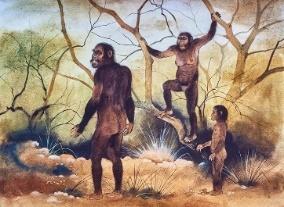
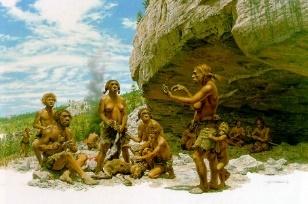
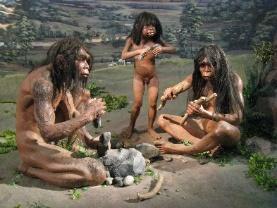
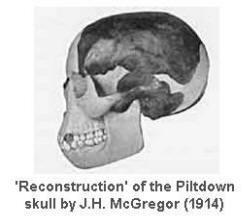
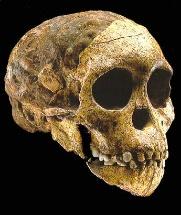
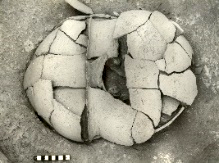
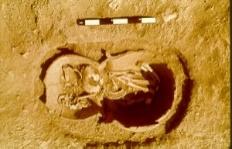
The write-up on child in archaeological anthropology is excellently protrayed to convey the significance in simple but effective manner. The write-up has educated me on the aspect which I never thought of. Prof. Walimbe has signified the role of grandmothers in the subsistence and sustainence of the younger generation in archaeological past with a lucid scientific explanation. Will the past arrangement and pivital role of elderz in a family survive with the kind of present day nuclei families? The write-up, in my opinion, should reach more to younger generation to make them realise the role and structure of each component in the family. I look forward to similar educative information from Prof. Walimbe. Congrats. ...Prof. RK Ganjoo
Excellent write up by Prof. Walimbe. I am always fascinated with his writings. Role of children in various ethnographic works are well known. As it has been rightly pointed out role of children as reflected in Archaeological context has not been properly understood. In one hand, evidence of child in various forms in Archaeological context, and the other one that has not been properly understood/ worked is the role of children in society as reflected in Archaeological context. Hope some one in future will work on these lines.
S. B. Ota
Comments by Prof. K. K Basa:
I am happy that today the theme archaeology of children, initiated by Prof Walimbe and Prof Gautam Kshatriya has generated a lot of interest. Reference was also made to Tanni Chakrabarti's work. I was enjoying it quietly.
Now let me unfold the story. Around 2014 Or 15, Tanni came to me from Calcutta Univ for doing her Ph D with me. She wanted to work on the Acheulian of Susunia, West Bengal. That was the time I was looking for a student who would work on Archaeology of children in India. I politely told her my idea, along with a tentative framework and asked her to explore it. I told her that after working…
Excellent write-up by Prof. Walimbe. The grand parents- grand children bond explored so scientifically and sensitively. Grand mothers making grandchildren live longer, and grand children adding to the lives of the grandparents - this is beautifully brought out from the archaeological perspective. Certainly " the dots are connected " and so well 😊🙏.